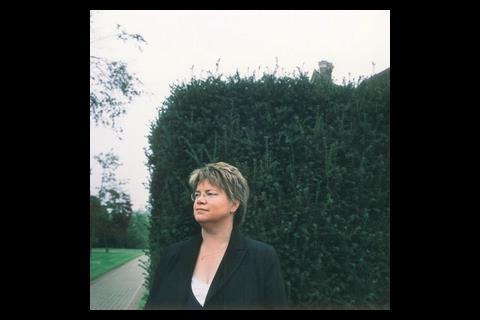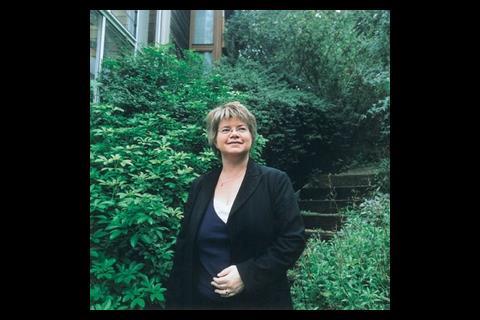Lynne Ceeney tells Karen Fletcher how as head of the BRE Sustainable Communities team her focus is all the time on people while she balances the needs of enterprise and the imperatives of responsible development
Lynne Ceeney is the kind of person useful to have around in a crisis - she has trained as a paramedic, and she is clearly good at thinking on her feet. Even though she changed her mind concerning her career - having studied environmental science and geography at Bradford University - Ceeney sees this as a continuation of her passion for “making life better for people”.
Her early medical know-how is evident when she describes her role as head of the BRE’s Sustainable Communities team. “We are sustainability GPs,” she says. “We go in and work with a client to diagnose what a site or policy needs. We are looking at the health, in terms of sustainability, of an area as a whole or a policy or a particular site where a development is proposed.”
Ceeney and her team do in-depth examinations. “We look for areas where a ‘patient’ is doing well, and some areas where particular treatments might be needed. So, for example, if an area is poorly served by public transport and people would have to use cars a lot, we would look for alternatives to the private car. If it’s an area rich in ecology, we would investigate how to integrate that ecology into the proposed developments, or whether there are areas that should be conserved.”
Working in Bradford gave Ceeney an insight into how poor environments can impact on lives. “I have seen how unsustainable communities affect real people, people who can’t afford to move out of an area, who are being walked over by a big developer who maybe isn’t giving the attention required to these issues.” She also highlights other issues such as high levels of crime or problems with employers not taking on people from certain postcodes.
But Ceeney doesn’t just work for local governments or residents. She also represents developers. “We have a mix of public and private-sector clients, which means that we see the sustainability issue from both sides. We work with the regulator on some occasions and we understand social and political aspirations. Equally, we work with developers, so we understand the technical and timing issues that they have to deal with. Sometimes it’s uncomfortable to be in the middle, but our job is to make the process work and come up with a sustainable outcome.”
The Sustainable Communities team takes a holistic approach to regeneration. Ceeney believes that in the past too much emphasis was placed on one aspect of a project, resulting in imbalance. “I think people focus on the elements that they know and that are important to them. For example, if you go back to the 60s, a lot of the emphasis was on speed of build and on materials such as concrete – not so much on performance, context or addressing questions such as how people would have access without private transport. Now there is a better understanding of the need for a level playing field across a whole range of issues.”
Adaptive design
It is important that today’s developers, planners and designers take the long-term view. “We need good preventative and adaptive design. Heat gain is going to be a real problem over the next 50 years or so. We know there’s going to be less water in the South East, but we know there is going to be heavier rainfall in other parts of the country. If we don’t design for that now, do we really have to knock it all down again like we’re doing now with areas built in the 50s and 60s?”
Ceeney’s mission is to encourage joined-up thinking about policies, areas and projects. This involves getting different specialisms to get together and consider all the benefits that even the smallest element of a project can bring if it’s designed intelligently. “We think that you can create three wins from one design measure. Take a roof. It keeps water out, keeps heat out and keeps it in. So that’s waterproofing and energy efficiency. It could also be an energy source through solar hot water systems or photovoltaics. You could also use it for harvesting rainwater. Perhaps there are even more uses if you have an active roof, providing personal open space or biodiversity,” says Ceeney.
The regeneration of cities shouldn’t be at the expense of the rural community
With so much to consider, it’s no wonder opportunities for sustainability can be missed. “The guys thinking about rainwater consider the roof one way,” says Ceeney. “The design looks at it another way; and the ecologist sees something different. The poor sustainability officer, who has to join it all up can be one versus six! There is nothing wrong with specialisms, but if they don’t work together they can be self-defeating. The economics of working together are clear: five bites for the price of one.”
As some of the work in sustainability is at the cutting edge, many in the public and private sectors are reluctant to be first with such new ideas. “That’s understandable if you look at some of the architectural experiments of the 1960s that people had to live in,” says Ceeney. “You don’t want to create a development that doesn’t work for people who are going to live in it for the next 50 or 60 years.” That is why much of her work consists of finding case studies from around the world that demonstrate sustainability in action and to introduce new ideas into the mainstream. Ceeney admires those who are prepared to give it a go: “BedZed is a fantastic example of people going first and seeing what they can do with innovative techniques. The knack is to have a go, to learn and use that knowledge.”
Ceeney is very keen that residents should have a say in work that affects their living environment. “I became a qualified charrette leader because that is about getting local people involved in decision making so they can shape decisions that affect them,” she says. “Charrettes interest me because they give a legitimacy to design work and they ensure that people affected at least understand that their issues have been considered, even if they are not all included. Design is not imposed on them.”
Passion for design
Ceeney is passionate about good design for residents but is not blind to the needs of business or to the role commercial organisations can play in creating sustainable communities. “My MBA gave me a different point of view from my environmental courses and helped me to better understand the business side of development and people whose prime motivation is not sustainability but creating a going concern. We need to understand their perspective. ”
Ceeney believes that more businesses will decide to make a positive impact on communities: “Any company in the West operates by consent, and people make their views known if they don’t like it. Our Sustainable Communities team can make sure that organisations work to their own objectives, but that they are also aware of the impact of those objectives on the community. Tesco is a good example. Yes, there are issues about its market share, but the regeneration work it has done in Leeds is very good. Tesco has offered training for people for jobs created by the new development.”
Politicians have focused on the future of our cities and the challenges of providing resources for the growing population without further damage to the environment. Ceeney views recent regeneration projects positively. “People want to live in the city now, and that is good,” she says. “But it is in danger of becoming a monoculture of young professionals. The city is where all the facilities are and is usually the heart of the transport hubs. Where do the families with young children go?”
She points once again to the need for a holistic and balanced approach to future living. “The regeneration of cities shouldn’t be at the expense of the rural community. Concentration of services in the city centre poses problems for people in rural areas. And what do we do for people who don’t want to live in the 24 hour culture? There must be a role for the suburb or town. We need a solution which is a mixture of these elements: city, town and rural.”
Ultimately, Ceeney believes the future of creating a sustainable environment should be focused on people and making their lives better. And our modern solutions should last longer than those of previous generations: “If you can do something about poor environments, how on earth can you justify not doing something? I worked in areas which were 60s solutions to the last housing crisis and saw how much deprivation occurred there because of mistakes made 40 years ago. It is unforgivable when you know what these mistakes were to revisit them on people’s children and grandchildren.”
Source
Building Sustainable Design























No comments yet